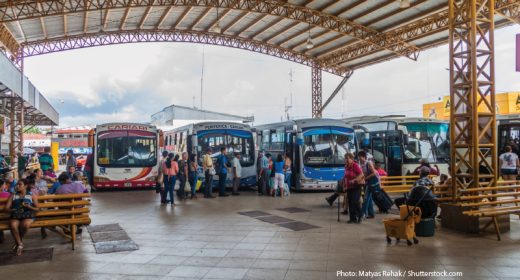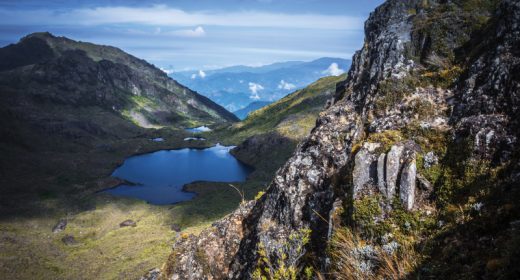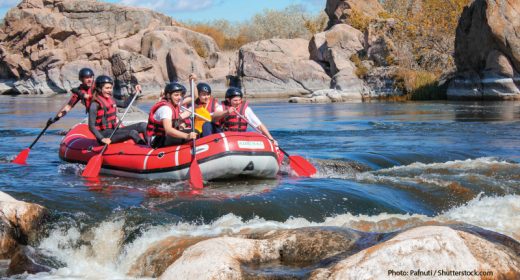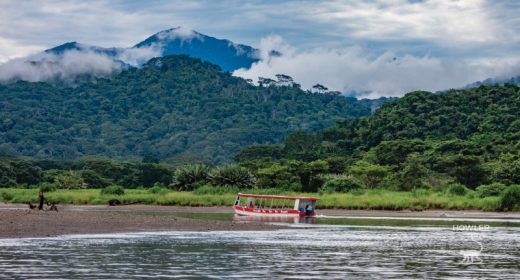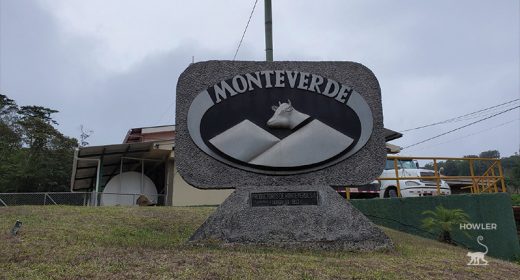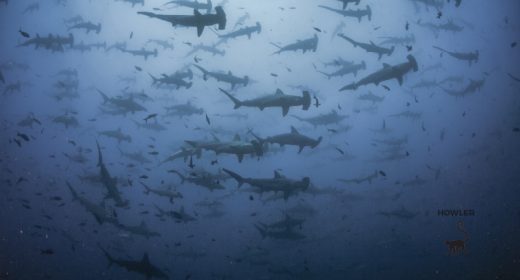
Featured Adventure – Safari River Float is a Slow Boat to Paradise
- JAN 04, 2018Warning: count(): Parameter must be an array or an object that implements Countable in /home/howlermag/public_html/old/wp-content/themes/new-paper/includes/general.php on line 193
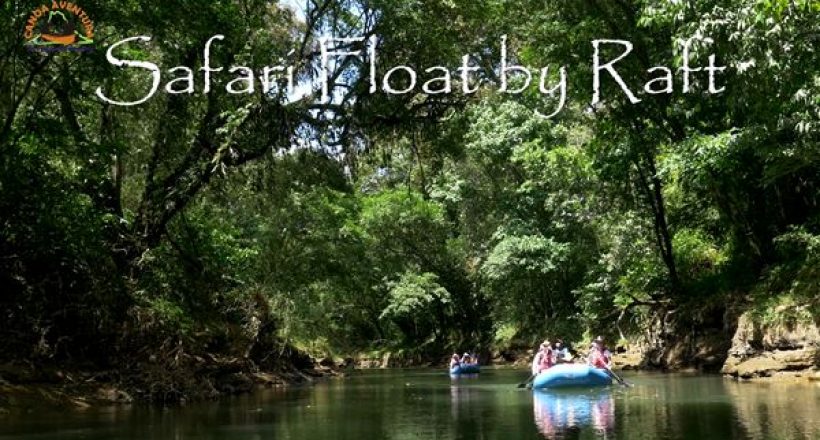
Your Lead Paragrpah goes here
[vc_row full_width=”full_width”][vc_column][vc_column_text]If you’re looking for the “Goldilocks zone” between the terror of extreme adventure and the boredom of staying in your room all day in Arenal, a safari float on the Río Peñas Blancas may be the perfect tonic.
You won’t crash into rocks and go flying into rushing water in Class 5 rapids. In fact, you don’t even need a helmet — and you can bring your 3-year-old with you.
Canoa Aventuras, a top tour operator in La Fortuna, offers tours of this lazy river by raft, canoe or kayak, with ample opportunities to see exotic wildlife, and with a stop at a traditional old finca for refreshments, a history lesson and a tour of a home built in the 1940s.
The worst that has ever happened on this tour is that howler monkeys have pooped on tourists, said Fabricio Artavia, 35, a funny, articulate and bilingual naturalist guide. Oh, sure, and a few rookie kayakers and canoers have turned over and gotten wet — the better to write home about.
But all in all, this is among the safest and most interesting ways for anyone, including a family with small children, to explore a fascinating river environment in one of Costa Rica’s most biodiverse places.
Among the animals commonly sighted are howler monkeys, white-faced monkeys, otters, sloths, crocodiles, turtles, iguanas and basilisks — known as “Jesus Christ lizards” because they can run on water.
[/vc_column_text][/vc_column][/vc_row][vc_row full_width=”full_width”][vc_column width=”2/3″][vc_column_text]Among the birds are the great blue heron, little blue heron, boat-billed night heron, snowy egret, cormorant and toucan.
Tours are offered by raft, canoe and kayak, with the easiest option being the raft, where a guide controls the boat and can stop for visitors to take pictures of some exotic animal. Small children will be safe in this raft. More adventurous teens or adults are free to steer their own vessel.
“It’s a Class 1 river, very easy,” said Fabricio. “The river has current but not rapids, so it’s real tranquilo….
“With one group, it’s better to do it in a raft. In the raft, for example, the guide is in the raft with the clients, he’s guiding and showing them all the animals. So it’s safer. In a kayak or canoe, the clients have to row, to steer, so if there’s an animal, the guide has to figure out how to stop and show everyone the animal.”
[/vc_column_text][/vc_column][vc_column width=”1/3″][vc_gallery type=”image_grid” images=”4224,4225,4226″ img_size=”full”][/vc_column][/vc_row][vc_row full_width=”full_width”][vc_column width=”1/3″][vc_gallery type=”image_grid” images=”4228,4229,4230″ img_size=”full”][/vc_column][vc_column width=”2/3″][vc_column_text]One of the main highlights of this tour is a stop at the finca of Don Pedro, who was born in this vicinity in 1912 and lived to the astonishing age of 102. Visitors are given a snack of fried plantains, cheese and bread, all grown or made here, with coffee made the old-fashioned way, heated by firewood.
Then tourists are given a historical talk about the property, along with a tour of the two-story, 1940s-era wooden house. The farm grows yucca, corn, bananas and beans, and it raises cows, horses and chickens.
Mauricio Rojas, 40, is Don Pedro’s grandson and has lived here since he was 1. He says his grandfather became an orphan at the age of 9 and was raised afterward by an aunt. At 21, Pedro had an opportunity to buy the finca from a Nicaraguan who wanted to return to his country.
The Nicaraguan wanted 500 colones for a 45-hectare property, and in those days one colón was a day’s wage. Pedro offered the man 200 colones down and the rest within a year, and a deal was struck.
By January 1933 Pedro was living on this property, and later that year he decided to marry Mauricio’s grandmother. They had seven children, of whom only four daughters survived. Mauricio’s mother and aunts were all born on this property, and his great-grandmother was the midwife.
[/vc_column_text][/vc_column][/vc_row][vc_row full_width=”full_width”][vc_column][vc_column_text]“My grandfather didn’t have a chance to go to school,” said Mauricio. “There were none when he was small, nor for my aunts. But I did go to school, and I remember my grandfather said that it was a big impediment for him, but he was happy that he was able to build a couple of schools.”
Mauricio said his grandfather lived 100 years without electricity, from the day he was born in 1912.
“So when my grandfather turned 100, they gave him the electricity,” he said. “That was in 2012. He passed on in 2014, when he was 102 years old.”
This tour costs $59 per person for adults by raft or kayak, or $67 by canoe. It lasts a half-day and departs at 7:30 a.m. and 1:30 p.m.
Just watch out for the monkeys overhead.
[/vc_column_text][vc_gallery type=”image_grid” images=”4227″ img_size=”full”][/vc_column][/vc_row]

